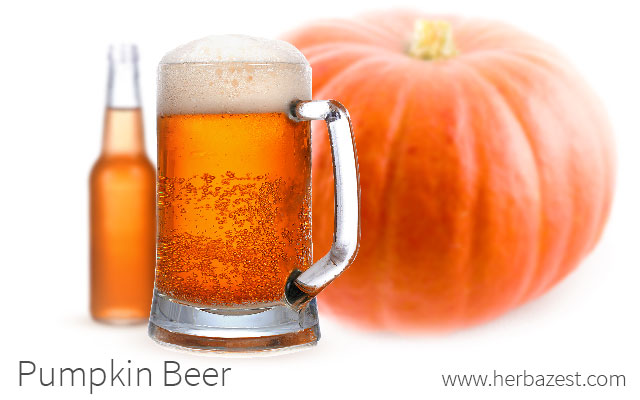Pumpkin beer has been enjoyed since colonists realized that this New World fruit was also a useful ingredient for fashioning beers. When the cold months set in, pumpkin beer is reminiscent of the warmth and comfort of home - one reason among many for which the amber-colored fall beverage remains so popular.
History of Pumpkin Beer
Witnessing the importance of pumpkin in Native Americans' diets, European colonists and pilgrims began to develop their own uses for pumpkin over time. In the absence of barley and other popular ingredients for brewing beer, pumpkin became an accessible ingredient in the New World.
PUMPKIN BEER CONSUMPTION HAS BEEN WELL-DOCUMENTED SINCE THE 17TH CENTURY.
The pumpkin beer recipes used by pilgrims likely drew from a mixture of pumpkin, maple syrup, hops, persimmons, and other spices. One method was to smash and press raw pumpkins before boiling its juices, straining out the remaining pieces of solid flesh, adding spices, and fermenting.
Best Pumpkin Beer
Ingredients that are reminiscent of pumpkin pie - like hints of brown sugar, cinnamon, nutmeg, pumpkin spice, honey, vanilla, and maple syrup - pair well with pumpkin beer.
Appropriate and carefully-selected spices are absolutely essential in pumpkin beers because the pumpkin flavor itself can be subtle and understated, making it difficult to fully come through. Indeed, many breweries will rely solely on the presence of pumpkin spice and other ingredients that present the senses with a false illusion of consuming pumpkin.
Pumpkin ales should be thin to medium-bodied, while lagers will be more on the full-bodied side. The best pumpkin beers are those that strike a nice balance of flavors and spices. Brewed with actual pumpkin, they should have a good amber color, a fragrant aroma, and contain hints of both sweet and bitter notes.
How to Make Pumpkin Beer
To make pumpkin beer, first select a 'sweet' or 'pie' pumpkin that is rich in flavor and produces a substantial amount of flesh. Canned pumpkin can also be convenient alternative to fresh pumpkins, but be wary of sweetened and premade pie mixes, as they often contain ingredients that limit creativity and artistry in the beer-making process.
If using fresh pumpkins:
Roast them to form a soft puree consistency similar to canned pumpkin.
Boil the pumpkin mash in water for about an hour, adding malt extract, hops, or any other desired combination of spices or grains for flavor.
Cool the liquid and transfer it to a large bucket, adding enough water for a total of five gallons (19 L).
Add yeast and allow the mixture to ferment for 24 hours.
After fermentation, mix the pumpkin beer with a priming sugar dissolved in water and bottle for at least one week before serving.
Where to Buy Pumpkin Beer
Pumpkin beers tend to be seasonal craft beers. In the fall, they are widely available throughout many grocery stores and liquor stores. During this time, various bars, pubs, and micro-breweries will offer pumpkin beers on tap, but they can also be found at local pumpkin festivals, fairs, and events.
A six-pack of pumpkin beer ranges from $8 - 12 USD in stores, while a drink at the bar may cost as much as seven or eight dollars a pint, depending on location and variety.
Profiting from the abundance of pumpkin in the new world, colonial Americans were able to fashion good-tasting beers, a legacy that continues on to this day in the form of sweet pale ales and full-bodied lagers. In this way, early American immigrants proved that pumpkin beer can be a delicious drink worth trying.
Sources
- American Homebrewers Association, Cucurbito Pepo (Pumpkin Ale) | Designing the Perfect Pumpkin Beer Recipe | 5 Tips on Brewing Pumpkin Beers from Elysian Brewing Co.
- Beer Judge Certification Program (BJCP), Inc, BJCP Style Guidelines, Category 21, Spice/Herb/Vegetable Beer
- The Colonial Williamsburg Foundation, Some pumpkins




